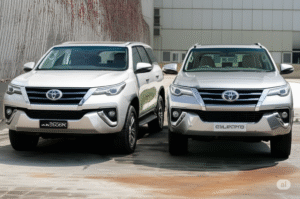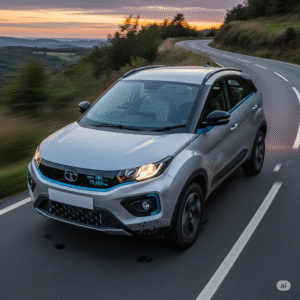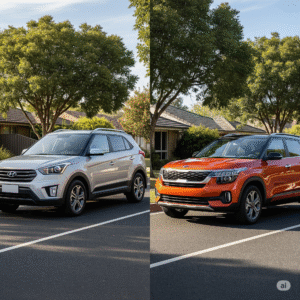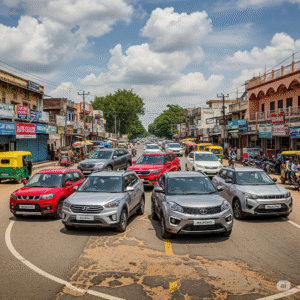First-Time Car Buyer Guide: Your Roadmap to Ownership
Build Your Website in Minutes with One-Click Import – No Coding Hassle!
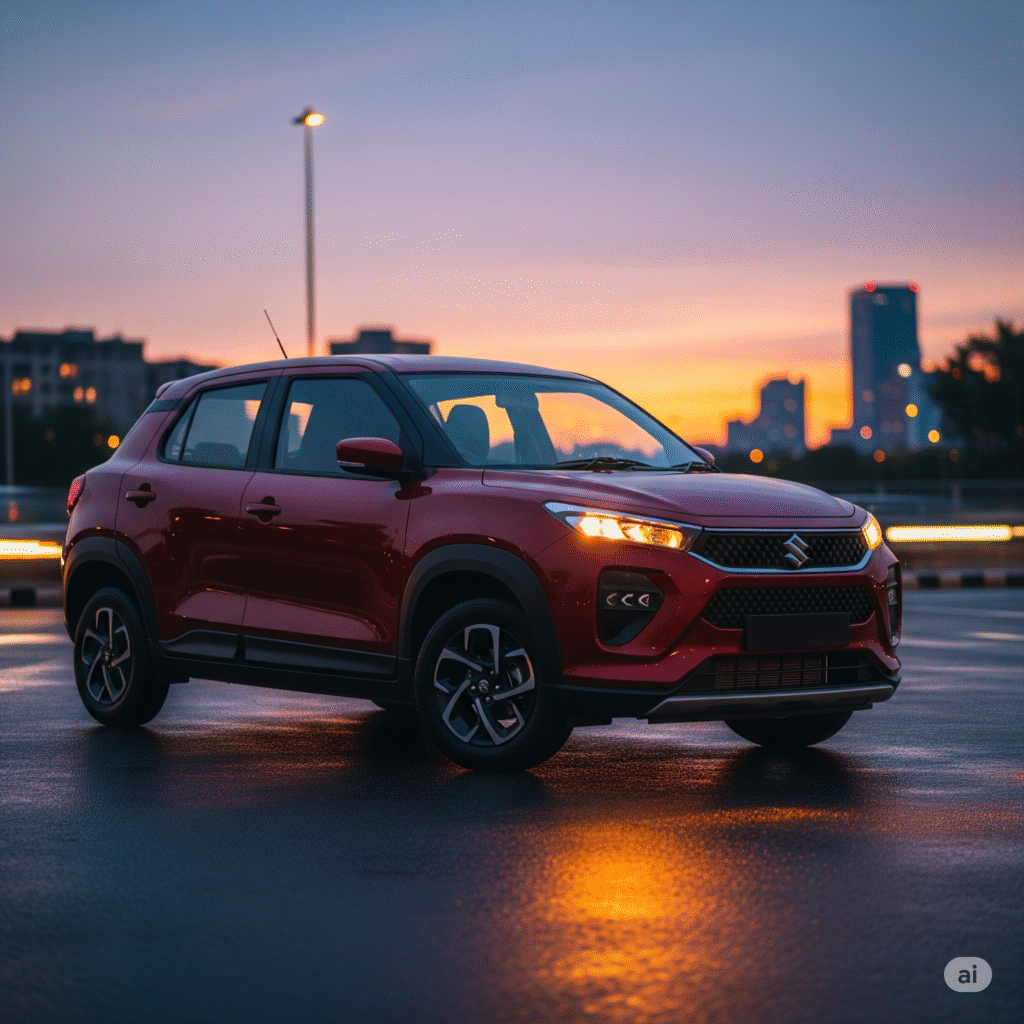
Buying your first car is more than just a transaction; it’s an investment in your lifestyle. A well-informed decision will lead to years of comfortable and hassle-free ownership.
Step 1: Assess Your Needs and Lifestyle
Before you even think about models or features, understand why you need a car and how you’ll use it.
- Purpose: Is it for daily office commutes, weekend family outings, long highway trips, or a mix of everything?
- Usage: How many kilometers will you drive daily? Will you mostly drive in city traffic or on highways?
- Passengers: How many people will typically be in the car? Do you need space for children (and child seats), elderly family members, or frequently carry luggage?
- Parking: Do you have ample parking space at home and work? Compact cars are easier to maneuver and park in congested cities.
- Road Conditions: Are your usual routes smooth city roads, broken rural paths, or a mix? Higher ground clearance might be a factor.
This assessment will help you narrow down the type of car you need:
- Hatchbacks: Compact, fuel-efficient, easy to park, ideal for city dwellers and small families. (e.g., Maruti Suzuki Swift, Baleno, Tata Tiago)
- Sedans: Offer more boot space and comfortable rides, suitable for small families and long highway drives. (e.g., Honda City, Hyundai Verna, Maruti Suzuki Dzire)
- Compact SUVs/Crossovers: Higher ground clearance, robust looks, good cabin space, and easy to manage in cities. (e.g., Tata Nexon, Maruti Suzuki Brezza, Hyundai Venue, Maruti Fronx)
- Mid-size SUVs: More space, powerful engines, and commanding presence, suitable for larger families or those seeking more adventure. (e.g., Hyundai Creta, Kia Seltos, Mahindra XUV700)
- MPVs/MUVs: Designed for maximum passenger capacity, ideal for large families. (e.g., Maruti Suzuki Ertiga, Kia Carens, Renault Triber)
Step 2: Set a Realistic Budget (Beyond the Sticker Price)
This is perhaps the most crucial step. Remember, the “on-road price” is significantly higher than the “ex-showroom price” you see advertised.
- On-Road Price: Includes ex-showroom price + RTO (Road Tax, Registration) + Insurance + handling charges + extended warranty (optional).
- Running Costs: Factor in fuel (petrol, diesel, CNG, EV), periodic servicing, spare parts, and unforeseen repairs.
- Financing Costs (EMI): If taking a loan, understand the interest rate, tenure, and monthly EMI. A good thumb rule is that your total monthly car expenses (EMI + fuel + maintenance + insurance) should not exceed 10-25% of your monthly income. The “20/4/10 rule” suggests 20% down payment, 4-year maximum loan tenure, and EMI not exceeding 10% of monthly income.
- New vs. Used Car: New cars offer warranties, the latest features, and peace of mind. Used cars are more affordable, depreciate less, and can be a smart way to save lakhs, but require thorough inspection. For used cars, consider certified pre-owned options.
Step 3: Research and Shortlist Models
Based on your needs and budget, dive into research.
- Online Research: Use automotive websites (CarDekho, CarWale, Rushlane, etc.) to compare features, specifications, mileage, and read expert/owner reviews.
- Safety Ratings: Prioritize cars with high Global NCAP safety ratings (5-star is ideal) for adult and child occupant protection. Look for features like multiple airbags (at least 6), ABS with EBD, Electronic Stability Program (ESP), and ISOFIX child seat mounts.
- Fuel Type:
- Petrol: Cheaper upfront, good for low to moderate daily running.
- Diesel: Higher upfront cost, better fuel efficiency for high daily running (above 1000-1200 km/month).
- CNG: Very economical to run, but higher upfront cost, smaller boot space (due to cylinder), and limited availability of filling stations.
- Electric Vehicle (EV): Zero emissions, low running costs, but higher upfront cost and reliance on charging infrastructure.
- Transmission:
- Manual: More engaging, typically better mileage, lower cost.
- Automatic (AMT, CVT, Torque Converter, DCT): More convenient in city traffic, but generally less fuel-efficient and higher priced. AMTs are affordable but can be jerky. Torque converters and DCTs are smoother but more expensive.
- Resale Value: Consider models with good resale value if you plan to upgrade in a few years. Maruti Suzuki, Hyundai, and Tata models generally hold good value.
Step 4: The Dealership Experience and Test Drives
- Visit Multiple Dealerships: Don’t settle for the first one. Compare prices, discounts, and offers from different dealers for the same model.
- Bargain: Always negotiate the price, insurance, and accessories. Dealers have margins.
- Test Drive: This is non-negotiable.
- Drive on various road conditions (city traffic, open road, broken patches).
- Check seating comfort, visibility, ease of controls, and ergonomics.
- Pay attention to engine noise, suspension comfort, braking, and steering feel.
- If buying an automatic, check the smoothness of gear shifts.
- Drive with family members if they will be regular passengers to check their comfort.
- Pre-Delivery Inspection (PDI): Before taking delivery, thoroughly inspect the car for any scratches, dents, or missing accessories. Check the VIN (Vehicle Identification Number) on the car matches the one on the documents. Ensure all features are working.
Step 5: Financing Your Purchase (if applicable)
- Get Pre-Approved: Before visiting dealerships, get pre-approved for a loan from banks or NBFCs. This gives you negotiating power and clarity on your budget.
- Compare Loan Offers: Don’t just rely on the dealer’s finance options. Compare interest rates, processing fees, and foreclosure charges from multiple lenders.
- Read the Fine Print: Understand all terms and conditions of the loan agreement before signing.
Step 6: Insurance and Documentation
- Mandatory Insurance: Third-party liability insurance is mandatory by law in India. It covers damages to a third party.
- Comprehensive Insurance: Highly recommended. It covers damages to your own car due to accidents, theft, natural calamities, fire, etc., along with third-party liability.
- Add-ons: Consider useful add-ons like Zero Depreciation, Return to Invoice (RTI), Engine Protection, and Roadside Assistance (RSA), especially for a new car.
- Compare Policies Online: Use online aggregators to compare quotes from various insurers based on coverage, Insured Declared Value (IDV), and claim settlement ratio.
Key Documents Required for New Car Purchase (for buyer):
- Identity Proof: Aadhaar Card, PAN Card, Passport, Driving License, Voter ID.
- Address Proof: Aadhaar Card, Utility Bills (electricity, gas), Rent Agreement, Passport, Bank Statement.
- Age Proof: Birth Certificate, 10th/12th Marksheet.
- Income Proof (for loan): Salary Slips (last 3-6 months), Bank Statements (last 6 months), Form 16, ITR (Income Tax Returns).
- Passport-sized photographs.
Documents you will receive from the dealer:
- Invoice/Bill of Sale
- Temporary Registration Certificate
- Sale Certificate (Form 21)
- Road Worthiness Certificate (Form 22)
- Insurance Policy copy
- Owner’s Manual, Warranty Card
- PUC (Pollution Under Control) Certificate
Step 7: Post-Purchase & Maintenance
- Registration: Your dealer usually handles the permanent registration process. Ensure you get your Registration Certificate (RC) book/smart card and number plates within the stipulated time.
- First Service: Adhere to the manufacturer’s recommended service schedule. The first few services are usually free (labour only).
- Basic Checks: Regularly check tire pressure, engine oil level, coolant, brake fluid, and windshield washer fluid.
- Listen to Your Car: Pay attention to unusual noises, vibrations, or warning lights on the dashboard. Address them promptly.
- Cleanliness: Regular washing and interior cleaning help maintain the car’s aesthetics and value.
Buying your first car is an exciting journey. By following these steps and doing your homework, you can ensure a well-informed decision that brings joy and convenience for years to come.
Image: Here’s a comprehensive guide for first-time car buyers in India:
First-Time Car Buyer Guide: Your Roadmap to the Perfect Ride
Buying your first car is an exciting milestone, but it can also feel overwhelming with countless decisions to make. From choosing the right model to navigating financing and understanding maintenance, there’s a lot to consider. This guide will walk you through every essential step to ensure a smooth and confident purchase.
1. Assess Your Needs and Lifestyle
Before you even start looking at cars, take a moment to understand why you need a car and how you’ll use it.
- Purpose: Is it for daily city commutes, frequent highway trips, family outings, or a mix of everything?
- Passengers & Cargo: How many people will regularly travel with you? Do you need space for luggage, groceries, or sports equipment?
- Driving Conditions: Will you mostly drive on smooth city roads, congested traffic, or rougher terrains?
- Fuel Type:
- Petrol: Generally cheaper upfront, good for low daily running (under 20-30 km).
- Diesel: Higher upfront cost, but more fuel-efficient for long daily commutes.
- CNG/LPG: Economical for high running, but may have less boot space and require more frequent maintenance.
- Electric (EV): Zero emissions, lower running costs, but higher upfront cost and requires charging infrastructure.
- Body Type:
- Hatchbacks: Compact, fuel-efficient, easy to park – ideal for city driving.
- Sedans: Comfortable ride, good boot space, suitable for small families and highway travel.
- SUVs/MPVs: Ample space, higher ground clearance, commanding driving position – great for larger families, rough roads, or frequent road trips.
2. Set a Realistic Budget
Beyond the showroom price, consider the total cost of ownership. A good rule of thumb is that your total car expenses (EMI, insurance, fuel, maintenance) should not exceed 25% of your monthly income.
- On-Road Price: This includes ex-showroom price, RTO charges (registration, road tax), insurance, and handling charges.
- Financing:
- Down Payment: Aim for at least 20% of the on-road price to reduce your loan amount and EMI.
- EMI (Equated Monthly Installment): Use online EMI calculators and ensure it doesn’t exceed 10% of your monthly income.
- Loan Tenure: A shorter tenure (e.g., 4 years) means higher EMIs but less interest paid overall.
- Interest Rates: Compare offers from different banks and NBFCs (Non-Banking Financial Companies).
- 20/4/10 Rule: 20% down payment, maximum 4-year loan tenure, EMI not exceeding 10% of monthly income.
- Running Costs: Fuel, routine servicing, and unexpected repairs.
- Insurance: Mandatory in India.
- Depreciation: Cars lose value over time. Some models hold their value better than others.
3. Research and Compare Car Options
Once you have a clear idea of your needs and budget, dive into research.
- Online Reviews & Ratings: Check multiple automotive websites for expert reviews and owner feedback.
- Manufacturer Websites: Get the latest information on features, specifications, and prices.
- New vs. Used:
- New Car: Latest features, warranty, peace of mind, but higher price and immediate depreciation.
- Used Car: More affordable, less depreciation, but requires thorough inspection and history check. Consider certified pre-owned options for added assurance.
- Safety Features: Look for airbags, ABS (Anti-lock Braking System) with EBD (Electronic Brakeforce Distribution), traction control, parking sensors/camera, and ISOFIX child seat mounts.
- Technology & Comfort: Infotainment system, smartphone connectivity (Apple CarPlay/Android Auto), automatic climate control, power windows, comfortable seating, and ample cabin space.
4. The Buying Process: Test Drive & Inspection
This is a crucial step that many first-time buyers rush.
- Test Drive: Drive the shortlisted cars on various road conditions (city traffic, open roads, bumps) and for a sufficient duration (at least 5-10 km). Pay attention to:
- Steering feel and responsiveness.
- Braking performance.
- Suspension comfort.
- Engine noise and vibration.
- Visibility from the driver’s seat.
- Comfort of seats and ergonomics of controls.
- Inspect the Car (especially for used cars):
- Check for any leaks when parked.
- Examine the body for rust, dents, or signs of accident repair.
- Check tire condition (tread depth, uneven wear).
- Listen for unusual engine or suspension noises.
- Verify all lights, AC, and electricals are working.
- For used cars, consider a pre-purchase inspection by a trusted mechanic.
5. Documents Required for Purchase & Registration
Be prepared with the necessary paperwork.
For Booking/Loan Application:
- Identity Proof: Aadhaar Card, PAN Card, Passport, Driving License, Voter ID.
- Address Proof: Aadhaar Card, Utility Bills (electricity, gas), Passport, Rent Agreement.
- Age Proof: Birth Certificate, 10th Marksheet.
- Income Proof:
- Salaried: Latest Salary Slips (3-6 months), Form 16, IT Returns.
- Self-Employed: Latest IT Returns, Audited Balance Sheet, Profit & Loss Statement, Business Proof.
- Bank Statements: Last 3-6 months.
- Dealer Price Quote: Proforma Invoice of the chosen car.
- Passport-sized photographs.
For Car Registration (by dealer on your behalf):
- Form 20: Application for registration.
- Form 21: Sale certificate from the dealer/manufacturer.
- Form 22: Roadworthiness certificate from the manufacturer.
- Valid Car Insurance Policy copy.
- Identity & Address Proof of owner.
- PAN Card / Form 60 / Form 61.
- Temporary Registration Certificate (provided by dealer).
- Chassis Pencil Print.
- Affidavit (on non-judicial stamp paper) if address mismatch.
- Customs Clearance Certificate (for imported vehicles).
6. Car Insurance: A Non-Negotiable
Car insurance is mandatory in India.
- Third-Party Insurance: Legally required, covers damages/injuries to a third party. Does not cover damages to your own car.
- Comprehensive Insurance: Highly recommended. Covers third-party liability and damages to your own vehicle due to accidents, theft, fire, natural calamities, etc.
- Add-ons (Optional but Recommended):
- Zero Depreciation Cover: Pays full cost of parts without deducting depreciation during claims.
- Engine Protection Cover: Crucial for protecting the engine from water ingress or oil leakage.
- Return to Invoice (RTI): Pays the original invoice value in case of total loss or theft.
- Roadside Assistance (RSA): Provides help in case of breakdown, flat tyre, etc.
- Insured Declared Value (IDV): The maximum amount your insurer will pay in case of total loss or theft. It decreases each year with depreciation.
- No Claim Bonus (NCB): A discount on your premium for not making any claims in the previous policy year. It can go up to 50% over five claim-free years.
- Compare Online: Use comparison websites to find the best policy with good coverage and a high claim settlement ratio.
7. Common Mistakes to Avoid
- Impulsive Buying: Don’t let emotions drive your decision. Take your time.
- Ignoring the Total Cost: Focus on the on-road price, EMIs, and long-term running costs, not just the ex-showroom price.
- Skipping Test Drives: This is your only chance to truly feel the car.
- Revealing Your Full Budget: Salespeople might try to upsell you. Be firm about your budget.
- Not Researching Loans: Compare interest rates from multiple sources, not just the dealer’s preferred financier.
- Overlooking Practicality: Prioritize functionality and your actual needs over just appearance or status.
- Neglecting Documentation: Ensure all paperwork is complete and correct before signing.
8. Basic Car Maintenance Tips for New Owners
Once you own the car, proper maintenance is key to its longevity and performance.
- Read the Owner’s Manual: Understand your car’s specific maintenance schedule and features.
- Regular Oil Changes: Essential for engine lubrication and cooling. Follow manufacturer-recommended intervals (typically every 5,000-10,000 km or 6-12 months).
- Tyre Health: Check tyre pressure weekly and tread depth regularly. Rotate tyres every 8,000-10,000 km for even wear.
- Brake Checks: Pay attention to any squeaking or reduced braking efficiency. Get them inspected regularly.
- Fluid Levels: Regularly check engine oil, coolant, brake fluid, transmission fluid, and power steering fluid.
- Air Filter Replacement: A clean air filter improves engine efficiency. Replace as recommended (every 12,000-15,000 km).
- Battery Maintenance: Check for corrosion on terminals and ensure it’s charged.
- Cleanliness: Regular washing and waxing protect the paint, and a clean interior maintains value.
- Listen to Your Car: Pay attention to unusual sounds, vibrations, or warning lights on the dashboard. Address them promptly.
- Adhere to Service Schedule: Follow the periodic maintenance schedule recommended by the manufacturer.
By following these steps, you’ll be well-equipped to make an informed decision and enjoy the freedom and convenience that comes with owning your first car. Happy driving!


